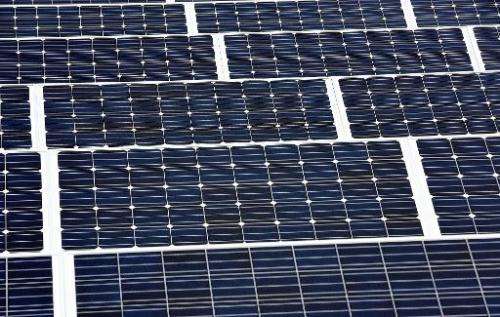Investment to limit climate change is lagging

Spending on measures to limit global warming declined last year, and was deeply inadequate to avoid its worst effects, said a climate finance analysis released in Copenhagen Tuesday.
Governments and the private sector spent about $359 billion (263 billion euros) in 2012—down from $364 billion the year before, said a report by the Climate Policy Initiative (CPI), an independent team of climate finance analysts and advisors.
The analysis was unveiled at a meeting of the Global Green Growth Forum which includes representatives of governments, the business sector, investors and international organisations working for cleaner, safer energy.
The International Energy Agency said last year an investment of $5 trillion was needed in renewable energy by 2020 to achieve a UN goal of limiting global warming to 2.0 degrees Celsius (3.6 deg Fahrenheit) over pre-Industrial Revolution levels.
This goal is mainly being targeted by projects to reduce emissions of Earth-warming carbon dioxide (CO2) created through fossil-fuel burning for energy production and transport.
The World Bank has since projected a temperature rise of 4.0 C by the end of the century—triggering more extreme heat waves, declining global food stocks and sea-level rises affecting hundreds of millions of people.
"Efforts to scale up finance are falling further and further behind," said a CPI statement.
The body said governments contributed $135 billion, or 38 percent, of total finance and the private sector the rest, including an estimated $102 billion by project managers, $66 billion by manufacturers and corporations and some $33 billion by households on greener energy.
"While public support for climate activities was significant, it was still dwarfed by current government support to fossil fuel energy consumption and production," said the statement.
"Private investors, who can and should provide the lion's share of global climate finance for good reason—as asset owners and end users of renewable technologies—only invest their money when the returns on offer outweigh the costs," added the CPI.
The report found that 76 percent of all climate financing came from the country it was spent in.
Developed countries spent about $177 billion and developing states $182 billion on climate investment, said the CPI.
Technological progress meant there was "some cause for optimism" in renewable energy, it noted.
"Although private investment has declined in general terms, technology costs for large-scale renewable energy have fallen further, perhaps as economies of scale start to take hold."
© 2013 AFP

















